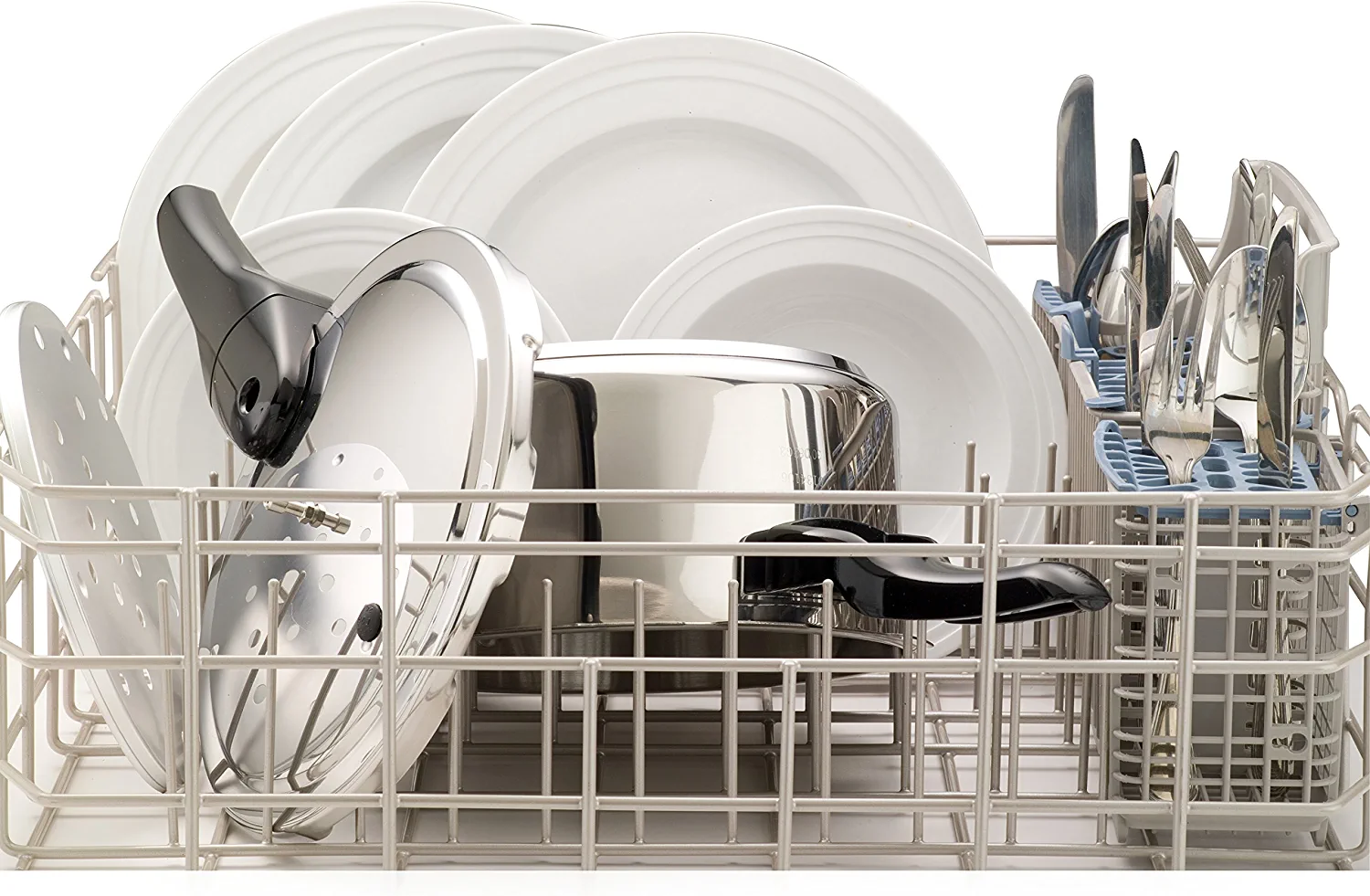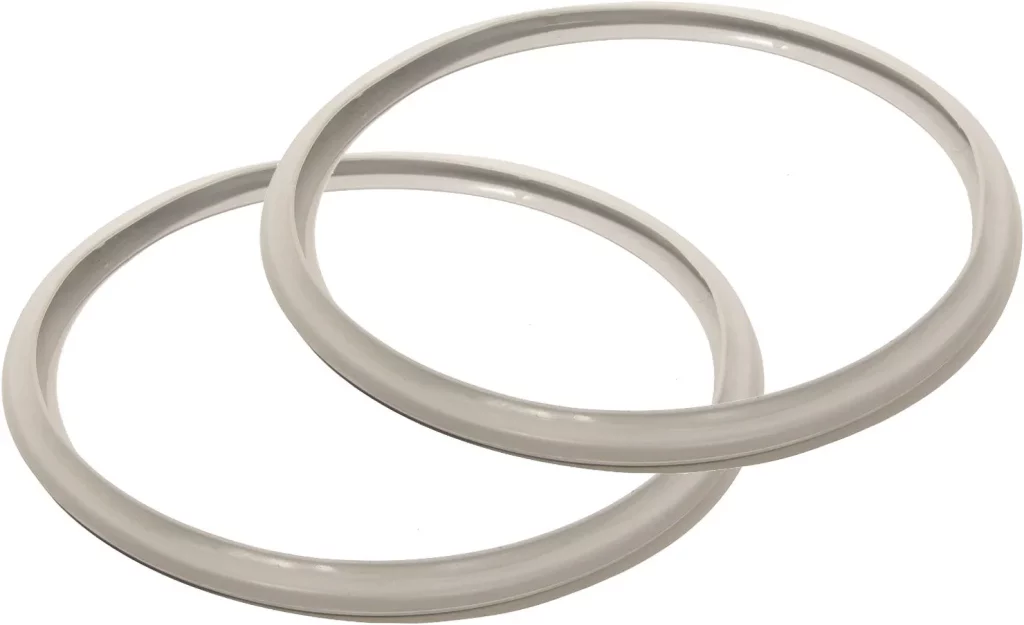If your pressure cooker is spewing steam and water like a geyser, you’re probably looking for answers. Maybe all it needs to get back in working order is a good cleaning, but if that doesn’t fix the problem, fear not!
Troubleshooting a pressure cooker can be tricky business. But don’t fear, there’s no problem too big for you to conquer when armed with knowledge and attention to detail!
Here are possible fixes that can help whip your trusty kitchen appliance right into shape again.
Through this list of most likely explanations, uncover the root of your issue and restore order in the kitchen faster than ever before. By following these steps, swiftly return back into simmering delicious dishes within minutes, all thanks to that trusty pressure cooker or instant pot!
So after this comprehensive guide your question, Why the pressure cooker is leaking and how to fix it? will solve in many easy and simple ways.
Let’s get started!
Quick Navigation
Why the pressure cooker is leaking and how to fix it?
Seeing our pressure cooker malfunctioning can be a real bummer, but before you resign to your fate and throw it out the window – let’s consider simpler solutions.
Maybe all we need is some good old TLC through cleaning and slight adjustments in usage! Who knows? We might just have better luck than expected!
There are several reasons why your pressure cooker might leak steam and water:
1. Excessive filling:
When cooking up something delicious in your pressure cooker or instant pot, you always want to get the best results. To make sure that happens, it’s important to stick with the manufacturer’s instructions concerning capacity – don’t try filling beyond two-thirds of its maximum!
This is especially important because many foods can expand during cooking and will need enough room inside for this expansion without spilling out into an unwanted mess.
Here’s the solution:
Not sure if that pressure cooker is up to the task of feeding your horde? Check out a trusted user manual for more details on whatever appliance you have; it might be more forgiving than anticipated.
But why guess when you can get ahead and whip-up larger meals in no time with an upgraded instant pot or bigger pressure cooker!
2. Having a damaged por or lid:
If you’ve tried the usual suspects to solve your pressure cooker’s steam and water leaks, but no luck so far – it might be time for a deeper dive. It’s possible that over time, small cracks caused by temperature changes or accidental accidents have resulted in damage within the body of the appliance itself.
Metal parts can expand and contract depending on what they’re experiencing in terms of heat; therefore if there are any micro-fissures present (no matter how unnoticeable) this could drastically alter its performance when cooking with high temperatures involved!
Here’s the solution: Sealing off Pore or lid
To prevent any unexpected calamities from befalling your pressure cooker or instant pot, make sure to store it in a safe spot away from potential hazards. Furthermore, look for small bubbles coming out of the top or side of the appliance as these are tell-tale signs that there may be a crack present.
If so, try sealing off this damage with food grade epoxy which is resistant against both moisture and temperature changes – just bear in mind though that this might only provide temporary respite; ultimately you’ll need to upgrade if longevity is what you’re after!
3. Gaskets that are broken or dirty:
The gasket of a pressure cooker or instant pot is key to its success in fast, safe cooking – but sadly they don’t last forever! Neglecting the maintenance and upkeep can cause it to break down quicker and give you more trouble than necessary.
With regular check-ins though, your trusty gasket’s lifespan will be extended so that there’s no need for inconvenient spills or messes!
Here’s the solution: Gaskets should be cleaned or replaced:
With a small cloth, try to remove any dust or dirt that might have piled up. If the gasket has become deformed, you can easily repair this with a new one which is inexpensive and available in most local stores.
If it’s really beyond help, simply switch out the old for a brand-new one. This might require a little more work, but with the right tools and guidance, you’ll be good to go in no time!
How to uncover gasket for cleaning or replacing?
Taking the time to maintain your instant pot is key! After allowing it to fully cool down, carefully remove the lid and locate a big rubber ring inside. Gently pry apart this part of your appliance with caution.
If all seems good continue on cleaning any areas that seem damaged. Once everything looks great you can go ahead and reassemble- do this regularly for optimal performance results!
Even if your pressure cooker has seen better days, don’t worry! A simple check on the capacity and you’ll be able to find a perfect replacement. And since it’s just a piece of rubber, no need to break the bank when shopping around, an affordable solution is within reach!
4. Whistle of Dirt:
No matter how securely your pressure cooker lid is positioned, if the whistle isn’t properly sealed off you’re in for an explosive surprise!
It’s not just that steam and water might leak out – over time food particles can become trapped within the mechanism. So make sure to give it a good check every now and then to save yourself from any unnecessary mess in the kitchen.
Here’s the solution: Elbow grease and a vinegar, baking soda solution
Want to get the most out of your pressure cooker? Make sure you clean its whistle regularly! A little bit of elbow grease and a vinegar, baking soda solution go along way in ensuring maximum hygienic cooking conditions while also helping extend the lifespan.
If it’s broken, do not fret – simply look up your make and model online for an exact replacement part number before ordering from any popular marketplace.
5. A lid that is improperly positioned:
Have you ever been so busy that something as small yet crucial, like making sure the lid of your pressure cooker is locked in place before using it, slipped your mind? Unfortunately this seemingly insignificant mistake can have major consequences on both safety and meal quality.
The food may take longer than expected to cook or could come out with an inconsistent texture – all because a simple lid wasn’t properly closed!
Here’s the solution:
With a helpful post-it or checklist near your pressure cooker, you can make meal prep much easier and less stressful. Trust me – this little reminder has been an absolute lifesaver!
So if you want to ensure top-notch results every time, start by making sure the lid is firmly locked in place before each use. And of course, don’t forget to keep your post-it or checklist by so you never have to worry about forgetting this crucial step again.
6.Gasket is installed incorrectly:
When installing the gasket, it’s important that you take care to point its pointed side inwards and keep those lips outward, otherwise, your pressure cooker will suffer from a leaky fate!
Here’s the solution:
Ensure that your gasket installation is lock-tight by double-checking its positioning to ensure the correct side faces the lid. If it’s still not working as intended, you may need to replace the gasket entirely.
Simply search online for your make and model of pressure cooker for a replacement part, or reach out to a professional to get expert advice. But with some care and attention, you’ll be back to cooking up delicious meals in no time!
7. Check Safety Valve:
Pressure cookers are designed with a critical safety feature, the pressure valve. This little hero helps us avoid any nasty blasts by acting as an escape route for too much steam building up in our cooker and releasing it before anything bad happens. Keeping you safe while letting you enjoy all of your favorite meals!
As soon as the safety valve bursts, an unstoppable force of steam rushes out its vent unless immediately replaced.
Here’s the solution:
Keep your kitchen safe and secure with a new safety valve for your pressure cooker lid. Make sure to purchase the correct spare according to model, so you can confidently enjoy deliciously cooked meals in peace!
8. Improper Handles Locking:
Locking the handles of a pressure cooker together is important for achieving an airtight seal. Neglecting to do so can put you at risk of steam escaping and could even be dangerous. Make sure your next meal is as safe as it’s delicious!
Here’s the solution:
To ensure the pressure cooker is safely sealed, check that both handles are firmly latched according to instructions. If you find that one of the handles won’t close, try gently adjusting it until it is locked in place.
Frequently Asked Questions about Pressure Cooker:
Q.1 Can a pressure cooker overheat?
Instant Pots provide a convenient way to quickly whip up meals, but be sure not to leave out an essential ingredient – water! Without enough liquid present during pressurization, your food could end up overheating and ruining the meal.
Q.2 When cooking, should a pressure cooker leak steam?
Although a steam-free cooking experience is ideal, sometimes even when the float valve has sealed in its ‘up’ position slight steaming may occur. This happens most often with dishes containing large quantities of liquid such as soups – but there’s no need to worry!
Q.3 Is it safe to leave my pressure cooker unattended?
While pressure cookers are designed to be safe and easy-to-use, it is still important to keep a close eye on your cooker during the cooking process. This will help you to avoid any potential accidents or hazards as well as ensure the best possible results.
Q.4 What prevents a pressure cooker from exploding?
There are a few key safety features that help to keep your pressure cooker from exploding, such as the lid’s gasket and safety valve.
Conclusion:
Pressure cookers and instant pots can quickly become indispensable kitchen tools to prepare delicious meals with minimal time, but their longevity in our lives is dependent on regular maintenance.
Overuse or misuse of the equipment will inevitably lead components becoming too dirty, broken or worn out, making it not function properly.
As you take into account if your pot may be at fault for leaking steam and water, don’t forget that sometimes personal habits may also contribute to this issue as well!
If need help troubleshooting remember safety should remain a top priority so call an expert do not attempt repairs yourself which could endanger oneself’s wellbeing, even though being able to fix something by yourself feels very rewarding!



